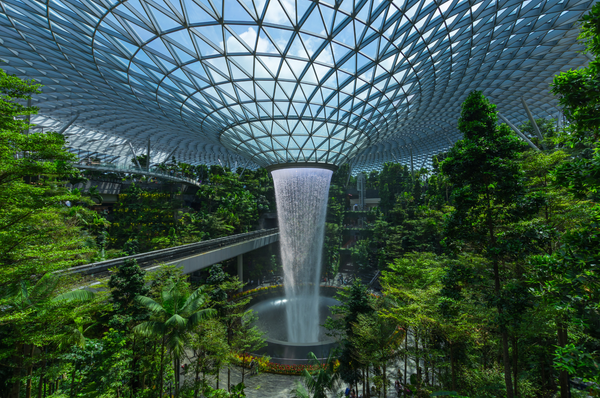Eco-Friendly Home Upgrades for Luxury Living: Sustainable Choices That Add Value
Today’s luxury homes are going green. Explore how reclaimed materials, efficient appliances, and renewable energy upgrades are redefining elegance and sustainability.
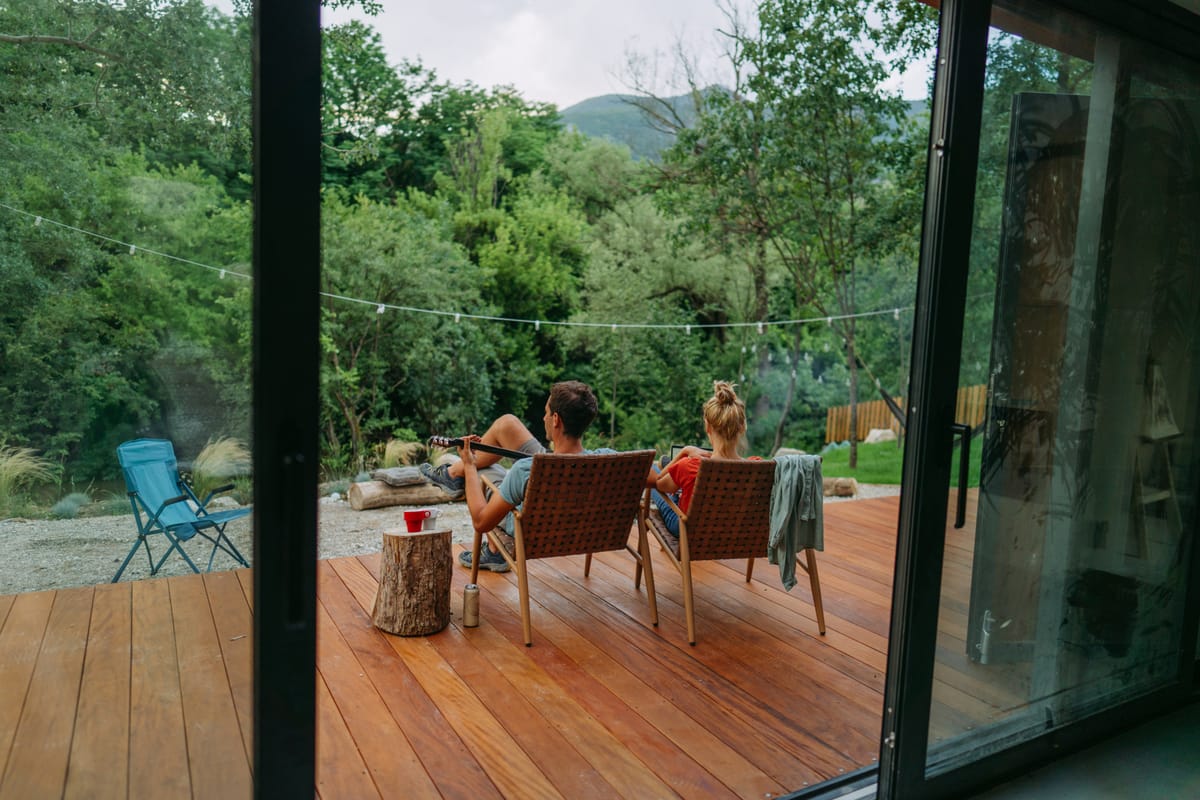
Luxury living is no longer limited to gorgeous residences and high-end facilities. It is becoming increasingly important to design homes that are not only stylish and comfortable but also eco-friendly and sustainable.
Today’s high-end homeowners are looking for ways to enjoy their lifestyle while reducing their environmental impact. Furthermore, eco-conscious design is now becoming a coveted feature among luxury homeowners and buyers.
If you plan to build a new sustainable house or just want to make some minor eco-conscious upgrades to your home, the first step in becoming more eco-friendly or aware is to choose sustainable options and support organizations that positively impact our environment.
With regard to home improvements, there are various ways to make green home improvements that add style, functionality, efficiency, and value to your home.
This article explores nine home upgrades perfect for luxury living, covering everything from green roofs to smart climate control systems.
1. Install energy-efficient lighting and smart control
One of the quickest ways to upgrade your home and become more eco-friendly and sustainable is to switch to energy-efficient lighting.
Switching to this form of lighting in your home is highly sustainable as it offsets a great deal of energy use.
You may not be aware, but LED lights use up to 90% less energy than regular bulbs and save the average user about $225 annually. Combined with automated controls, it allows you to automate lighting based on occupancy or natural daylight, ensuring you only use what you need.
Features like motion sensors, dimmers, and remote-access controls offer a seamless blend of convenience and conservation, perfect for modern luxury homes.
2. Use recycled, repurposed, or reclaimed materials
If you are familiar with sustainability practices, you must have heard the phrase "reduce, reuse, and recycle." The interesting thing is that it applies to home design and renovations.
Construction projects, even small ones, typically create unnecessary waste and lots of it.
In most cases, when planning a building project, homeowners often overlook where materials come from and where they go when no longer needed. That's where reclaimed and repurposed materials come in.
Repurposed or reclaimed materials (wood, beams, doors, flooring, copper, etc.) offset a tremendous amount of waste, save money, are still structurally sound and sustainable, and add character to your home.
This practice ought to have gone mainstream, but accessibility to repurposed materials remains a challenge. That said, many resources are now available to help you find reclaimed materials near you.
Here are some of our favorite options:
- Habitat for Humanity's ReStore
- Craigslist
- PlanetReuse
- Facebook Marketplace
- Freecycle
Consider incorporating reclaimed materials if you're updating a kitchen, redoing flooring, or adding unique architectural accents.
You may also like: 8 tips from our community to make your home more eco-friendly.
3. Install solar panels and battery storage
A solar energy system is one of the most impactful upgrades you can make. When installed correctly, they can produce energy for all or a portion of the year in various climates.
Home solar panel systems save households about $1,500 annually on electricity bills and produce 12 times less CO2 emissions than natural gas.
Depending on how efficient your solar panels are and how much energy they generate, you can earn passive income by selling excess electricity back to your local energy provider.
Furthermore, battery storage systems, like Tesla Powerwall, let you store energy during outages or peak demand times, enhancing your home’s self-sufficiency.
You may be happy to know that in the United States, residential solar energy assistance programs and incentives (e.g., tax credits) are available at both the state and federal levels, making it much easier for households to afford and install solar panels.
You can explore these programs on the Department of Energy’s website.
Besides saving households' monthly bills and giving homeowners the opportunity to earn passively, integrating solar panels adds a layer of appeal for eco-conscious travelers looking to swap homes with other conscious homeowners who reflect their values.
At HomeExchange Collection, we have a collection of eco-friendly homes and like-minded members in our communities looking for eco-friendly homeowners to swap with.
4. Energy-efficient windows and insulation
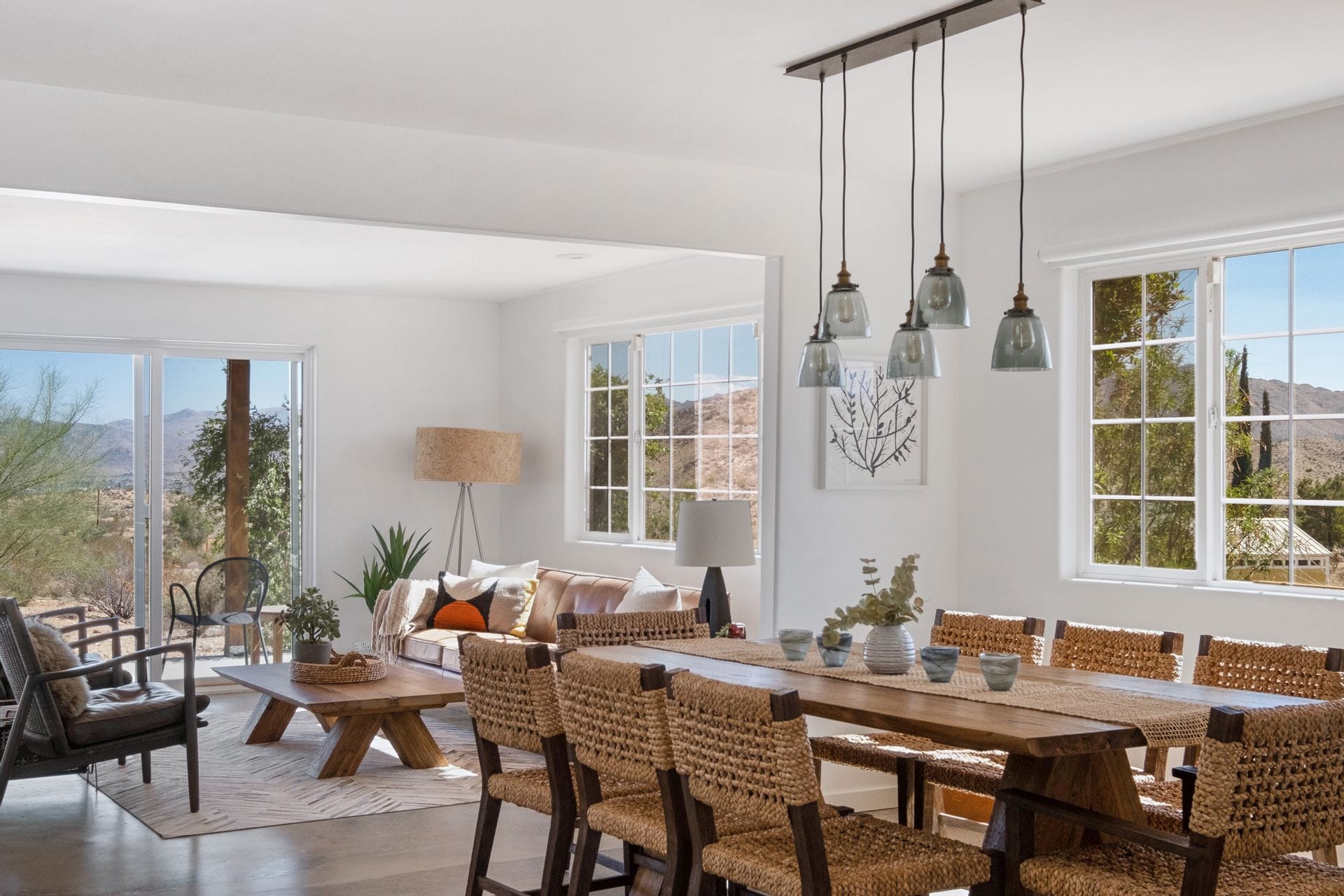
Windows are often the hidden culprit behind soaring energy bills. Heat gain and loss through windows account for an estimated 25–30% of residential HVAC energy use.
Traditional double-pane windows may let in up to 76% of solar energy, which becomes heat, forcing your cooling system to work overtime, especially in warmer months.
Upgrading to ENERGY STAR–certified windows is an excellent choice that pays off in energy savings and indoor comfort. These windows are designed with sustainability and efficiency in mind, typically featuring:
- High-performance frames (like fiberglass) with superior thermal resistance
- Advanced weather stripping to ensure airtight sealing
- Double- or triple-pane glass with insulating argon gas between layers
- Low-emissivity (Low-E) coatings, which use microscopic metallic layers to reflect heat and block harmful UV rays
To get the most out of your window upgrade, pay close attention to two key metrics: U-Factor (how well a window prevents heat loss) and Solar Heat Gain Coefficient (SHGC) (how well it blocks heat from natural light).
Both should be selected based on your local climate conditions.
5. Turn your bathroom into a spa-like retreat
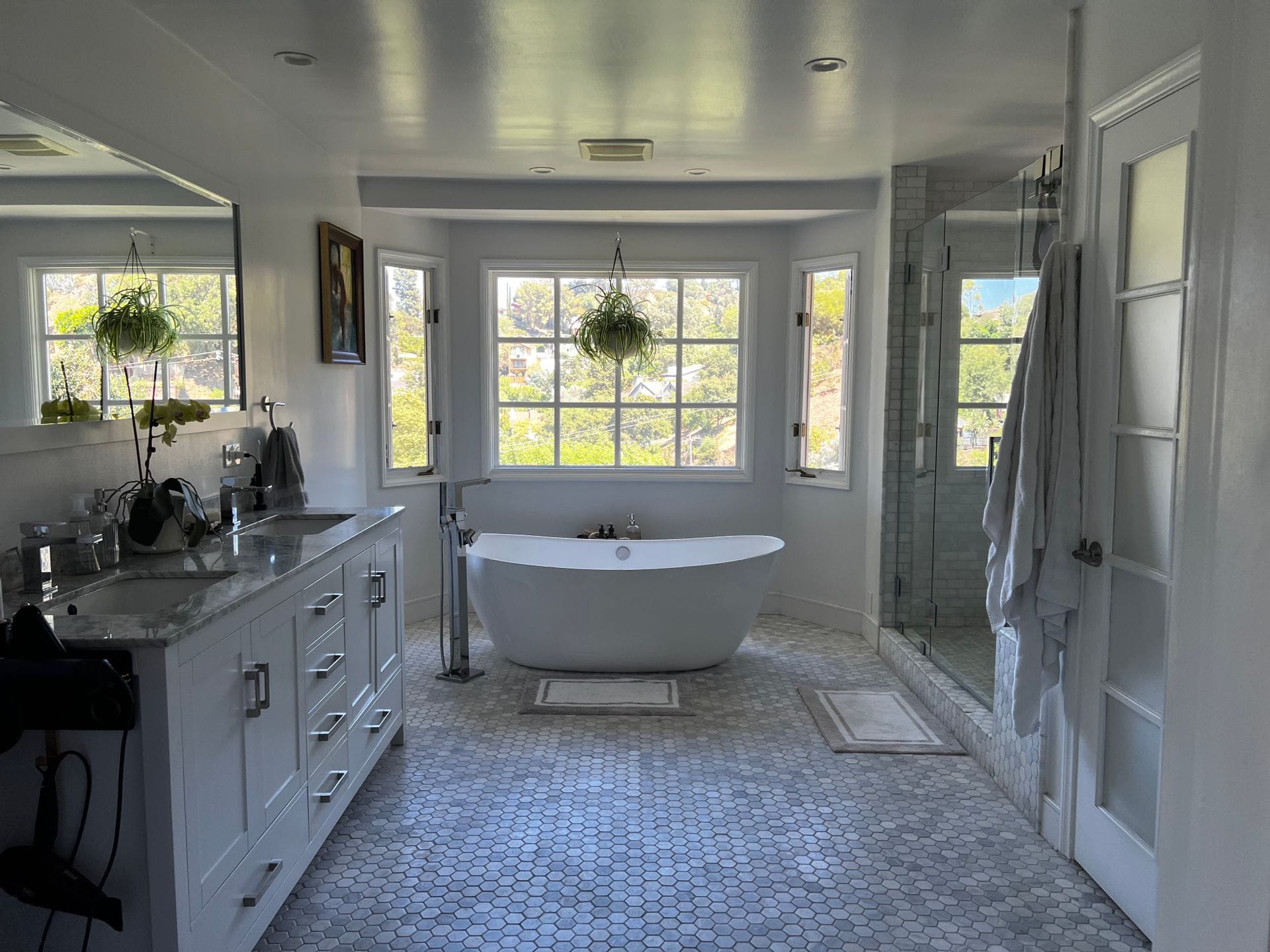
One section of your home that has proven to boost home values after remodeling is the bathroom.
According to a 2022 report by the National Association of the Remodeling Industry, upgrading your bathroom can help homeowners potentially recover up to 71% of the bathroom renovation cost once they sell their home.
That said, reimagining your bathroom as a private spa sanctuary elevates everyday living, especially in luxury homes where relaxation is a core design principle.
Start with high-end, sustainable materials such as marble or recycled glass countertops and water-saving luxury fixtures like low-flow showerheads, low-flow toilets, or dual-flush toilets without sacrificing style or experience.
Use sustainable materials like reclaimed wood and natural stone.
Install some new, energy-efficient smart light fixtures that can be controlled to provide soft, diffused lighting for a relaxing vibe. Add candles, fresh flowers, potted plants, soft towels, and fragrant oils for a luxurious touch in your eco-conscious oasis.
6. Replace outdated appliances
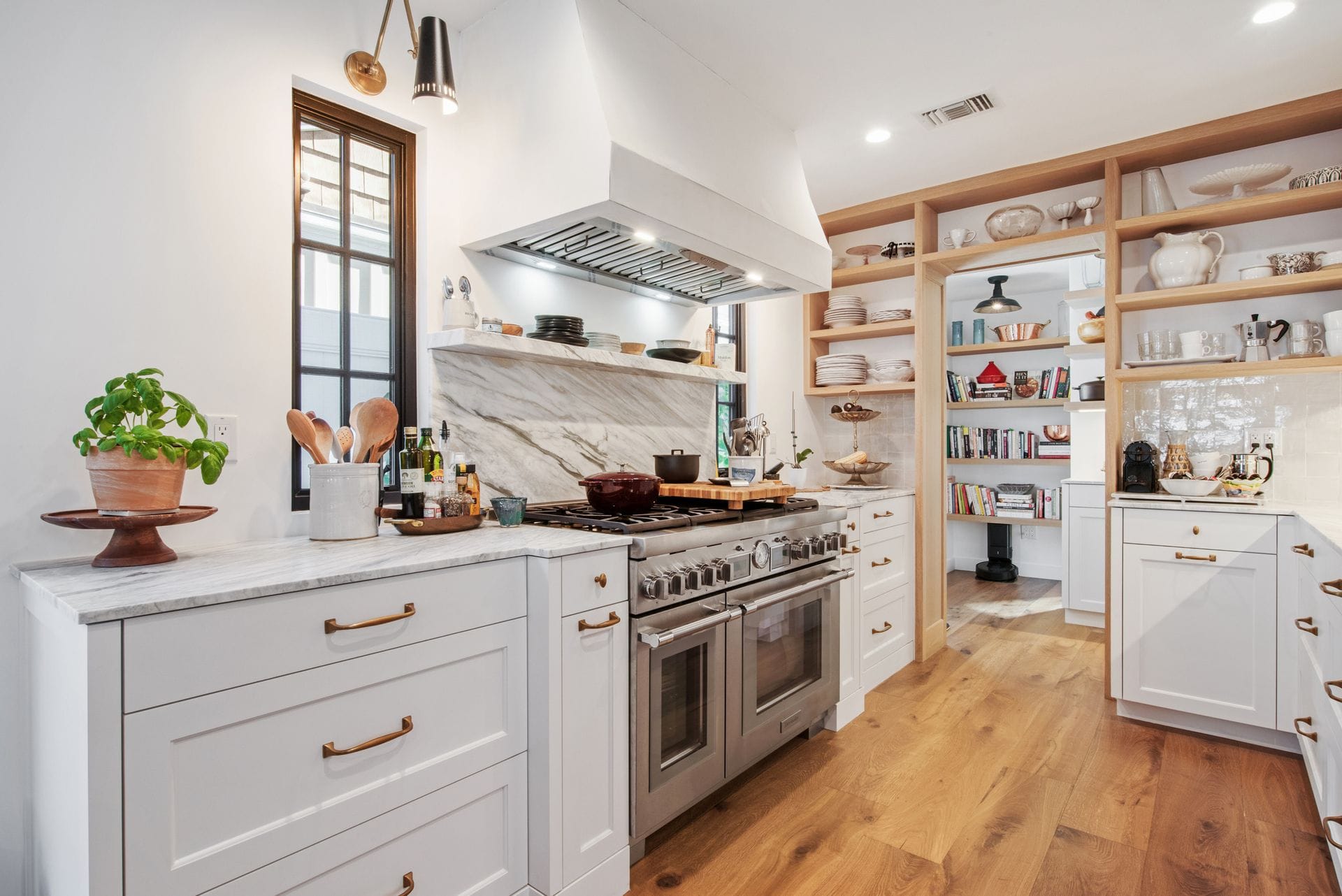
Like the bathroom, the kitchen is another area where you can upgrade your home with sustainable choices that add value.
Replacing wasteful and outdated appliances with energy-efficient versions can help reduce your environmental footprint, enhance day-to-day comfort, reduce utility bills, and add long-term value to your property.
High-efficiency refrigerators, washing machines, and dishwashers are readily available in luxury designs. If you’re having trouble figuring out if an appliance is efficient, check if it bears an ENERGY STAR label.
If it does, the appliance will be deemed energy-efficient according to the EPA or the DOE guidelines.
An additional benefit of switching to energy-efficient appliances like those with the ENERGY STAR label is that, in most cases, they significantly exceed federal standards for quality and efficiency, which means they’re likely to last longer.
Furthermore, making eco-friendly smart changes to your kitchen elevates convenience and makes it more appealing in luxury home exchange communities like the HomeExchange Collection.
Homeowners with environmentally friendly kitchens significantly enhance their homes' desirability in the exchange community, especially among fellow eco-conscious members who appreciate the ease and sophistication of environmentally friendly cooking spaces while traveling.
Beyond smart appliances, HomeExchange Collection members enjoy exclusive perks, such as access to private chefs and curated culinary experiences.
With The Chef & The Dish benefit, members can enjoy private 1:1 cooking sessions with world-class chefs, bringing gourmet experiences directly into the eco-friendly smart kitchens of HomeExchange Collection homes.
7. Switch to a tankless water heater
There's a strong probability that the hot water from your bathroom or kitchen sink is heated in a tank where a massive quantity of water is stored and maintained hot constantly, simply waiting for you to turn on the tap.
If you've ever run out of hot water, it means you've used up a full tank of water faster than the replacement could be heated.
The disadvantage of this setup is that the water is kept hot 24 hours a day, seven days a week, requiring a substantial amount of energy. But what if you don't want to wait for the water to heat up before washing your hands?
The solution: Tankless water heaters.
Tankless water heaters, powered by gas or electricity, heat water on demand and are far more efficient (24% to 34%) than storage water heaters, according to the Department of Energy.
This efficiency leads to cost savings. While tankless water heaters require an initial investment, they can be worth it in the long run.
8. Invest in a Geothermal Heat Pump
We already discussed solar as an eco-friendly upgrade that adds value to your home. But did you know that solar energy is not your home’s only renewable energy option?
Geothermal heating is a renewable energy system with a high potential for energy savings. It works by tapping into the consistent temperature beneath the earth’s surface to heat and cool your home during winter and summer.
According to the U.S. Department of Energy, these systems transfer heat in and out of your home depending on the season through a series of underground pipes, using 72% less energy than traditional air conditioners and 44% less than air-source heat pumps.
One reason geothermal is gaining traction is its adaptability. It is easier to retrofit than some other green energy systems, especially for homes with current heating and cooling systems using propane, natural gas, or heating oil.
That said, the installation process isn’t without its challenges. Excavation is essential to install the underground piping loop, which may temporarily impact your landscaping.
9. Use low-VOC paints
An eco-friendly upgrade to your home will not be complete without an upgrade to your home’s interior walls. When reimagining your living spaces, consider upgrading to an eco-friendly paint low in VOCs (volatile organic compounds). This can help strengthen both the aesthetic value of your home and the indoor air quality you breathe.
Traditional oil- and solvent-based paints often contain VOCs that can linger in the air long after application, emitting harmful fumes linked to respiratory issues and long-term health concerns.
In contrast, low-VOC and VOC-free paints are typically water-based, odor-neutral, and contain little to no hazardous compounds.
To ensure you’re making a truly sustainable choice, look for paints certified by trusted third parties such as:
- Cradle to Cradle
- GreenSeal
- MPI Extreme Green
- GREENGUARD
Benefits of eco-friendly home upgrades
Now that we have listed the eco-friendly home upgrades, let’s briefly cover some of their main benefits.
Reduced operating costs
With energy prices steadily rising year by year, one of the most critical benefits of making eco-friendly improvements is that it can help you cut down the cost of your monthly utility bills and reduce your home’s carbon footprint.
Additionally, the initial setup cost will soon be earned back through the savings you’ll make.
Increased property value & ROI
Because most environmentally friendly home improvements increase energy efficiency and help homeowners save money, buyers increasingly see the benefits, thereby increasing a home’s value and overall ROI compared to their non-green counterparts.
For example, according to a Zillow investigation, installing solar panels can boost a house’s evaluation value by an average of 4.1%.
Another study conducted by the DOE’s Lawrence Berkeley National Laboratory in 2022 analysed the connection between a property’s HES (Home Energy Score) and its valuation and discovered that final home prices were 0.4% higher for every $100 decrease in the HES’ estimated utility bills.
Improved indoor environment
Eco-friendly improvements that use sustainable, nontoxic materials have the extra benefit of improving indoor environmental quality. This is because they often contain few or no volatile organic compounds (VOCs).
VOCs emit molecules into the surrounding atmosphere, but when present in high concentrations for a long time, VOCs can cause or aggravate respiratory illnesses and even cause certain cancers.
Since Eco-friendly products or materials are low or free from these harmful chemicals, materials, and potential environmental pollutants, they are typically safer to build with and create a healthier indoor environment for your family.
Takeaway: Make your home eco-friendly to add value
Homeowners have many choices when it comes to improving their homes. Making eco-friendly home renovation choices offers benefits that extend beyond the aesthetics of your home.
With eco-friendly upgrades like those discussed in this piece, you can save money on energy costs, create a healthier interior environment, and reduce your ecological footprint.
Additionally, an environmentally friendly upgrade can increase a house's resale value and improve the overall quality of life for its inhabitants, their loved ones, and others.
If yours is for investment, you are guaranteed that your property will always be in high demand and appeal to today's most discerning buyers and guests.
Finding an environmentally friendly house to stay in, especially during travels, can be a challenge; however, with over 360,000 homes in 145 countries, HomeExchange Collection offers multiple lists of luxury eco-friendly homes and homeowners to swap homes with.
Visit HomeExchange Collection today to start your journey.
FAQs
Find answers to some of the most frequently asked questions about eco-friendly home upgrades for luxury homes below:
What does eco-conscious design mean in homebuilding?
It refers to architectural and design choices that reduce ecological impact, conserve resources, and promote sustainability, often through energy-efficient systems, sustainable materials, and smart technology.
Which types of home upgrades are eligible for tax credits?
Solar panels, geothermal heat pumps, energy-efficient windows and doors, insulation, and certain smart thermostats may qualify. Always consult a tax professional for current incentives in your region.
What’s the average cost of constructing an environmentally friendly house?
The average cost of building an environmentally friendly home per square foot is around $200. However, that can range from $150 to $600, depending on your location and the type and quality of the components and materials you use.
You should expect to pay toward the upper end of that range for a luxury eco-friendly home in high-cost states and near major metropolitan areas. In contrast, the lower-end range is a better estimate for rural areas in states with a lower cost of living.
What are the essential elements of an energy-efficient home design?
Key features typically include airtight insulation, high-performance windows, energy-efficient appliances, smart thermostats, and solar energy systems. Many eco-friendly homes also include xeriscaping or rainwater collection to cut down on drainage and water consumption.
How can you determine if a home is energy-efficient?
Look for an Energy Star certification, review utility bills for low consumption, check insulation levels, inspect windows and doors for drafts, and consider a professional energy audit to help determine your home's energy efficiency.
How many solar panels are typically required to power a house?
This depends on your energy usage, location, and panel efficiency, but the average home requires 15–25 panels.
Which building materials are considered non-toxic or safe for indoor use?
Examples include sustainably harvested wood, bamboo, recycled content materials, low-VOC paints and finishes, natural stone, and certain types of insulation like cellulose or mineral wool.


